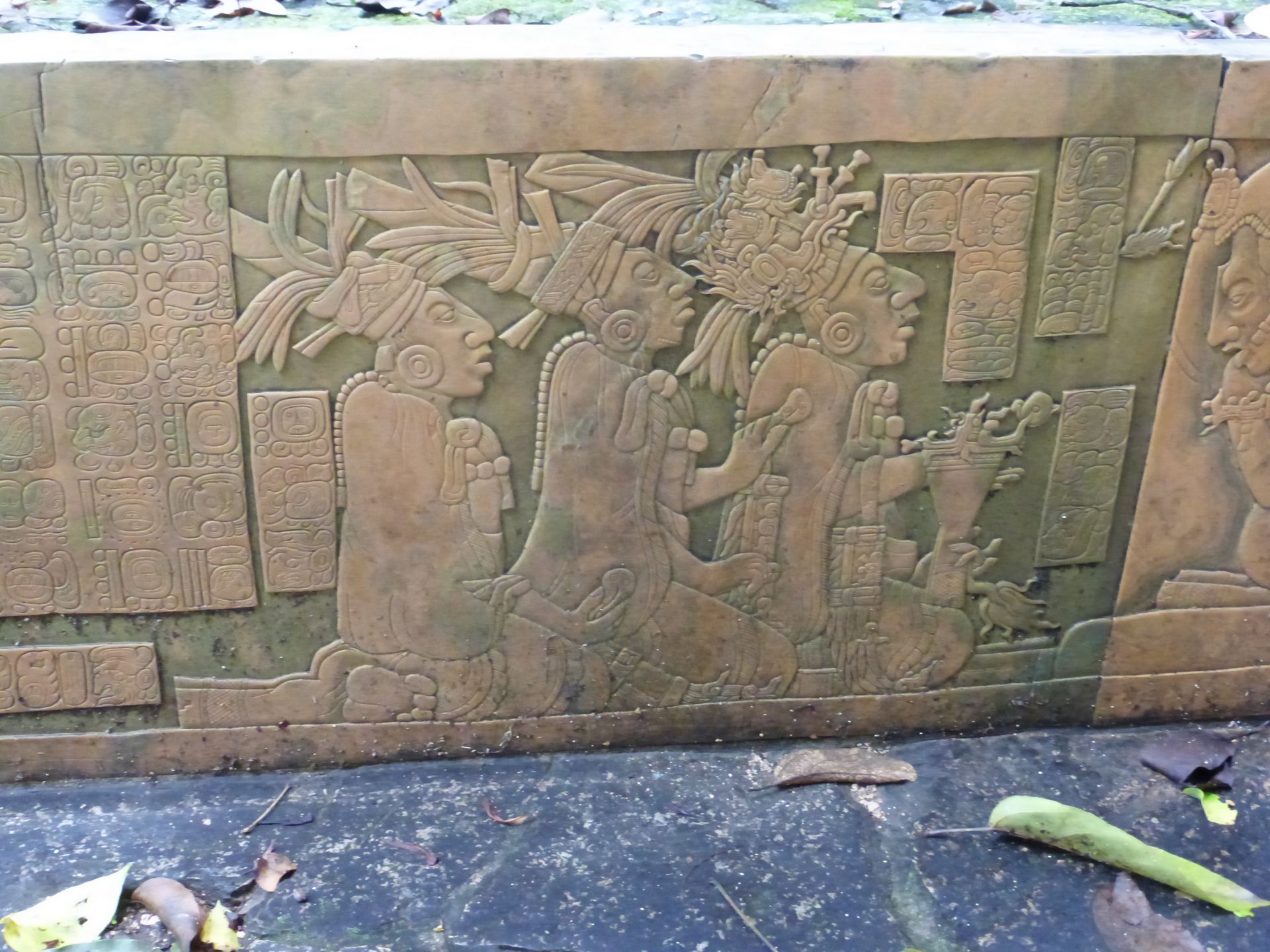2015 Expedition
In June of 2015 a group of seven members traveled to the Yucatan of Mexico to further the ongoing project of Book of Mormon archaeology. The team was looking to revisit some of the sites they had seen on a research trip in 2008, and to investigate the stelae located at the archaeological sites in northern Yucatan such as Uxmal, Kabah, Sayil and Coba. These are believed to be Golden Age Book of Mormon constructions as they are late Classical Period Mayan.
One of the first efforts made was to acquire soil samples from Rio Bec area "green areas" that have been discovered in the last several years through satellite imaging. These areas are known to have been anciently constructed for commercial sized agricultural production. The theory is that the green areas are Zoramite tobacco fields that fueled the Carthaginian marketing of tobacco products to Egypt from approximately 400 to 200 BCE. These samples will be sent to laboratories for spore analysis to see if tobacco production was done in these fields. If so, then this will help resolve the mystery of where the tobacco originated and who was supplying it. The collection of soil samples was accomplished and they are now in Mexico City waiting for testing to begin.
From the Rio Bec area the group traveled to Calakmul and at this site they noted a two-plaza construction similar to the "Moroni cookie-cutter" city layouts in Belize. And, similar to those layouts is a structure that divides the plaza in two to symbolize a transition of the belief system. Structure 5 at Calakmul focuses on a royal couple who we believe is Shield Jaguar II (Mosiah) and his wife Lady K'uk (daughter of King Zarahemla). Additionally, Calakmul has a defensive design that is also like the cities in Belize where the areas surrounding the city are on a long slope that allows "watchmen" to see approaching danger for miles around.
Palenque is always a treat and this year the group was able to visit Temple XIX as it is now open to the public. While at the site Neil Steede was able to reconnect with a friend he made at the site in 1965 when he first visited Palenque. Victor is a guide here who shared his collection of knowledge with the group. This meeting was ordained as Victor stated that he was led to talk with us as he knew we would need to know what he had to share.
We visited Uxmal and found this site to be a testimony of the life-after-death belief system of the craftsman who built it. The northern portion of the Yucatan is not a part of the Book of Mormon geography, but it certainly was inhabited by descendants of Book of Mormon people. Probably Zoramites/Mulekites from the style of architecture found here. These are Golden Age cultures who were anxious to testify their belief system and they did so by placing it in mathematical and geometric design. One who is familiar with the Restoration Faith belief systems has no problem understanding the details of the design. In this regard Uxmal is breathtaking.
The greatest surprise for the group came when a "chance" conversation at Kabah sent the group to Ek Balam where they discovered the "winged warriors." These are effigies in stucco. There are four of them on the same level of the facade and it appears they might represent the Three Nephites and John the Beloved who are the ones who "tarry" until Christ returns. This site dove-tails with Coba as the Temple of the Church is founded on nine circular foundations. Nine tomb-like foundations of the church and three "kings" at Ek Balam make a total of twelve disciples who established the post-resurrection church in the New World. There is more to come on this.
The trip was truly a testimony of the grace of God provided to those who ask, seek and knock. He opened doors and whispered truth in remarkable ways. Our group is in awe as to how wonderfully the prayers for this trip were answered and we look forward to His continued revelations as the days unfold and the research continues.




